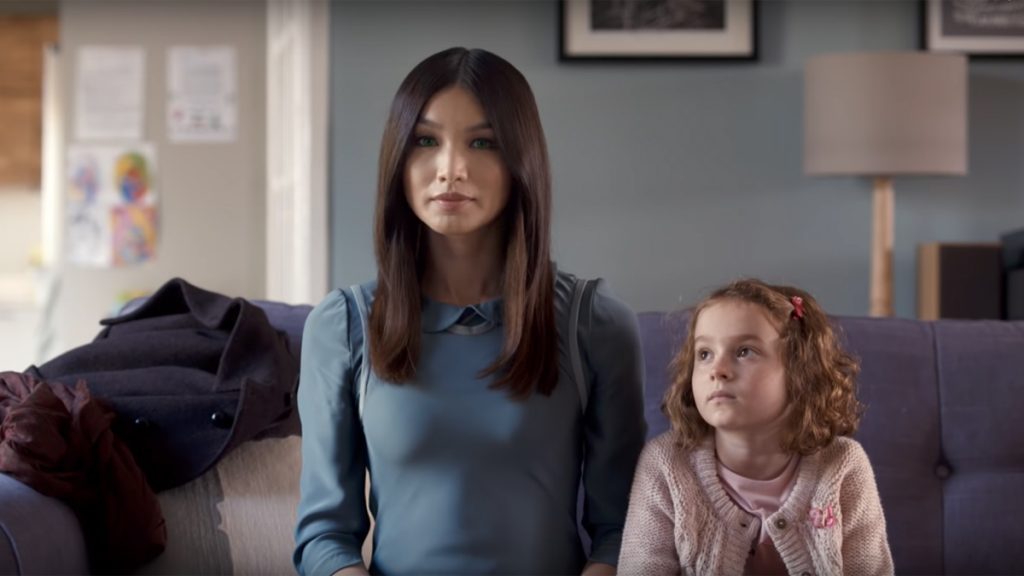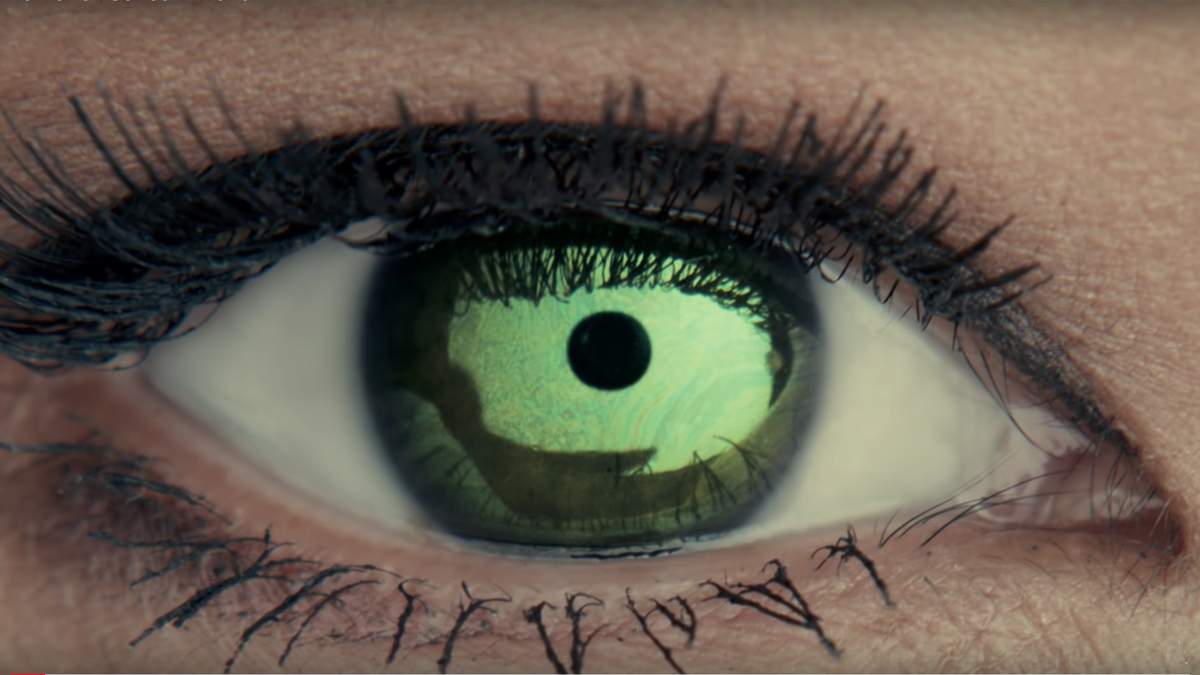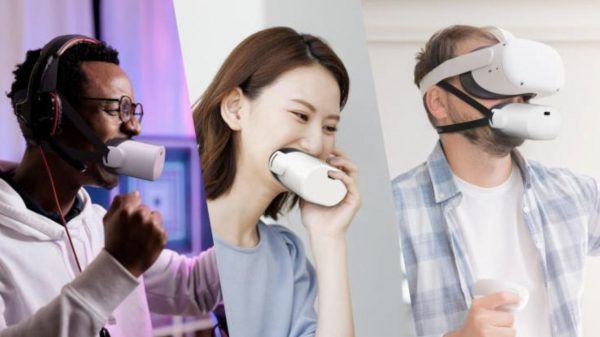Core Data:
- Vision: Human-like synthetic lifeforms – or ‘Synths’
- Type: Popular culture – TV series
- As Seen In: Humans
- Envisioned: 2015-2018
- Visionaries: Sam Vincent and Jonathan Brackley (series creators); Lars Lundström (creator of original Swedish show, Real Humans)
- Target Date: Present day – though it’s clearly an alternative version of reality
Overview:
Imagine a present day where androids indistinguishable from people are almost as ubiquitous as smartphones. That’s the premise behind Humans, the Channel 4 show that envisioned an alternative world where millions of ‘Synths’ perform household and workplace tasks so their human masters don’t have to.
Based on Swedish series Real Humans, the show became Channel 4’s most viewed drama in over 20 years when it launched in 2015. It’s easy to see why. Beyond Humans’ intriguing premise and big–name cast – featuring a couple of Hollywood stars in Oscar-winner William Hurt and The Matrix’s Carrie-Anne Moss – the writers embraced the opportunity to use the Synths to explore contemporary issues.
Because when the Hawkins, the ordinary middle-class family at the centre of the story, invited a Synth named Anita (played by future Eternals star Gemma Chan) into their home, they quickly found themselves living in a dangerous world of conscious machines and android rights. Humans took advantage of this tiny step from reality, exploring complex themes of AI, identity, prejudice and the increasing importance of technology in our lives – in other words, it’s a story crafted in the tradition of the best science fiction.

Key Tenets:
- Hardware: Synths are humanoid robots, almost totally indistinguishable from real people.
- Their economical movements are slightly otherworldly, however, because they don’t breathe or display emotions. In real life, the Synth actors went to a ‘boot camp’ where choreographer Dan O’Neill taught them to move like a machine. “We decided they would be very unobtrusive, a bit like a refrigerator, humming away,” O’Neill said. “The characters have to show they are machines, with an energy that wasn’t like ours.”
- Synths are as diverse as humans in terms of appearance.
- Their eyes help to distinguish them from ordinary humans. When Synths roll off the production line, they have bright blue eyes, but they turn green as soon as they’re bonded to their primary user.
- After software is released that awakens the Synths, giving them sentience and the ability to live lives of their own, a new range of unconscious models with orange eyes are launched onto the market. When Synths subsequently attain an even higher state of consciousness, their eyes turn purple.
- Synths can be turned on and off using a button under their chin. They also have a power-saving mode, in which their functions are greatly reduced.
- Synths require regular charging, via sockets installed in the home.
- Synths are stronger and faster than the standard human, allowing them to perform physical tasks well beyond the capability of their owners. They’re also sophisticated computers, and can connect themselves directly to the internet.
- Synths are anatomically correct and widely employed as sex workers.
- The blue fluid that’s essential for the Synths to function – effectively their blood – has healing properties when injected into humans. This suggests that the Synths have a biological component, rather than being pure machines – much like the Replicants in Blade Runner.
- Synth technology can be used to fill in damaged areas of a human brain with synthetic components – as seen in the case of Leo Elster, whose father used Synth tech to ‘repair’ the boy after he ‘died’ in a car accident as a child.
- In addition to turning Elster into a cyborg, Synth blood altered his DNA, making him a human/Synth hybrid. These new traits could be passed on to his offspring – though, thanks to the show’s cancellation after its third series, we never found out how these genes would manifest in a child.
- It’s also possible for a human consciousness to be transferred into a machine – renowned computer scientist Dr Athena Morrow finds a way for the consciousness of her late daughter, Virginia, to live on as an AI known as V.
- Experience: Activation is a simple process that involves the primary user speaking a few random keywords to the Synth. Several secondary users can also be bonded to the Synth.
- The primary use for Synths is providing help within the home. They can perform numerous household tasks, including driving cars.
- As such, they are often adopted as members of the family – the host family’s surname even becomes part of their designation.
- This can be confusing for humans, particularly for children who think the Synths are real people. There’s also a movement of people who masquerade as Synths, envying the simplicity of their robot lives.
- Not everyone welcomes Synths in society – many people are sceptical, while others are downright cautious and even violent towards them, treating them as an underclass.
- While factory settings ensure the ‘adult’ functions are turned off, these can be activated by the primary user – the Synths are programmed with multiple sexual techniques.
- Synths gaining consciousness has many repercussions for humanity. Thousands of humans and Synths are killed during the grand awakening of the so-called ‘Day Zero’, predominantly in air and traffic accidents. No longer compelled to work for their human masters, the Synths’ absence leaves many gaps in the labour market.
- Company: It’s not clear how many companies have a licence to manufacture Synths. We do know, however, that the firm behind the orange-eyed models is named Lundstrom – a reference to Lars Lundström, creator of the Swedish show that inspired Humans. There’s also a Synth manufacturer named Qualia.
- The Synth technology was created by scientists David Elster, George Millican and Edwin Hobb, with the first Synth being created around 1990. Elster soon started work on creating conscious models, but Millican was sceptical about his colleague’s plans. They subsequently went their separate ways.
- Economics: Synths are as widely available as smartphones, which suggests they’re relatively affordable. We know from the Hawkins family’s purchase of Anita that, over five years, the cost is comparable to buying a new car.
- There’s also a no-questions-asked 30-day return policy on new Synths, in the event you’re not satisfied with your new movel.
- Making every Synth look different seems to be a questionable economic model – surely it would be more efficient to produce fewer models in larger quantities.
- IP: The Synths appear to run on a proprietary operating system.
State of Play (January 2022)
- Hardware: There are numerous reasons why convincing anthropomorphic machines is currently impossible. For starters, we’re a long way from creating robots that look and move like people. While some prototype androids can replicate facial expressions, human beings are hardwired to recognise a ‘fake’ – the so-called Uncanny Valley is currently rather difficult to avoid.
- While humans have evolved to walk around on two legs, this movement is incredibly difficult for a machine to replicate – this is largely down to the remarkable amount of subconscious computations our brains do behind the scenes to keep us upright. Replicating the movement of other body parts – hands, for example – is also a massive challenge.
- When it comes to designing a range of helper robots, modelling them after humans may be a dead end. Something that moves around on wheels, with a more rudimentary claw mechanism may well work better – perhaps we should be looking to create a line of friendly neighbourhood Daleks?
- On a similar note, why would you go to the effort of building an android capable of controlling a vehicle if the technology for self-driving cars already exists?
- Experience: Even if we had the technological capabilities to build lifelike androids, it wouldn’t necessarily be in our best interests. For example, the existence of the Uncanny Valley means that any automaton that looks almost human (but not quite) will be much more disconcerting for users than something more obviously machine-like – in the same way that heavily stylised humans in animation are often much more believable than efforts at photorealism.
- We have no way of knowing how we’d respond to living in a world full of machines that look like us but who ‘think’ in an entirely different way. There’s also massive potential for mistreatment and discrimination of the Synths – as explored in Humans.
- And, even if it was currently possible to create machines with the capacity for genuine emotional responses – it isn’t – it’s difficult to think of a sensible reason to introduce them into the general human population. If you’ve created machines to perform menial tasks on your behalf, it seems implausible that anyone would run the risk of them subsequently becoming self-aware and downing tools.
- Economics: Human-like robots – such as the alpha3 units developed by Sanctuary – are still in the early stages of development, so many years away from hitting the commercial market.
- We’re talking seriously sophisticated technology here, so – at least in the early days – human-like androids are likely to be prohibitively expensive to build. It’s certainly difficult to imagine a scenario where they could become as ubiquitous in homes as smartphones – at least, not in the foreseeable future.
- Beyond the technology and the labour, a human-sized Synth would require large quantities of raw materials in its construction – this is unlikely to be good news for the environment.
Reality check: improbable but a great avenue for sci-fi stories
Androids that can pass for human are currently beyond our technological capabilities. Even if they were feasible, however, it’s debatable whether we’d want to introduce them into society – especially if they had the potential to develop emotions of their own.
Humans is less a reliable predictor of the future than a clever piece of speculative science fiction, whose Synths can be used as an allegory for many aspects of the modern world. In that regard, it continues a long tradition of sci-fi stories using tech to point a mirror at ourselves.
Further reference:
A self-confessed full-time geek, freelance journalist Richard has spent most of his career writing about sci-fi and fantasy – including more than a decade on staff for SFX magazine. He's particularly keen on franchises with "Star" in the title.






































